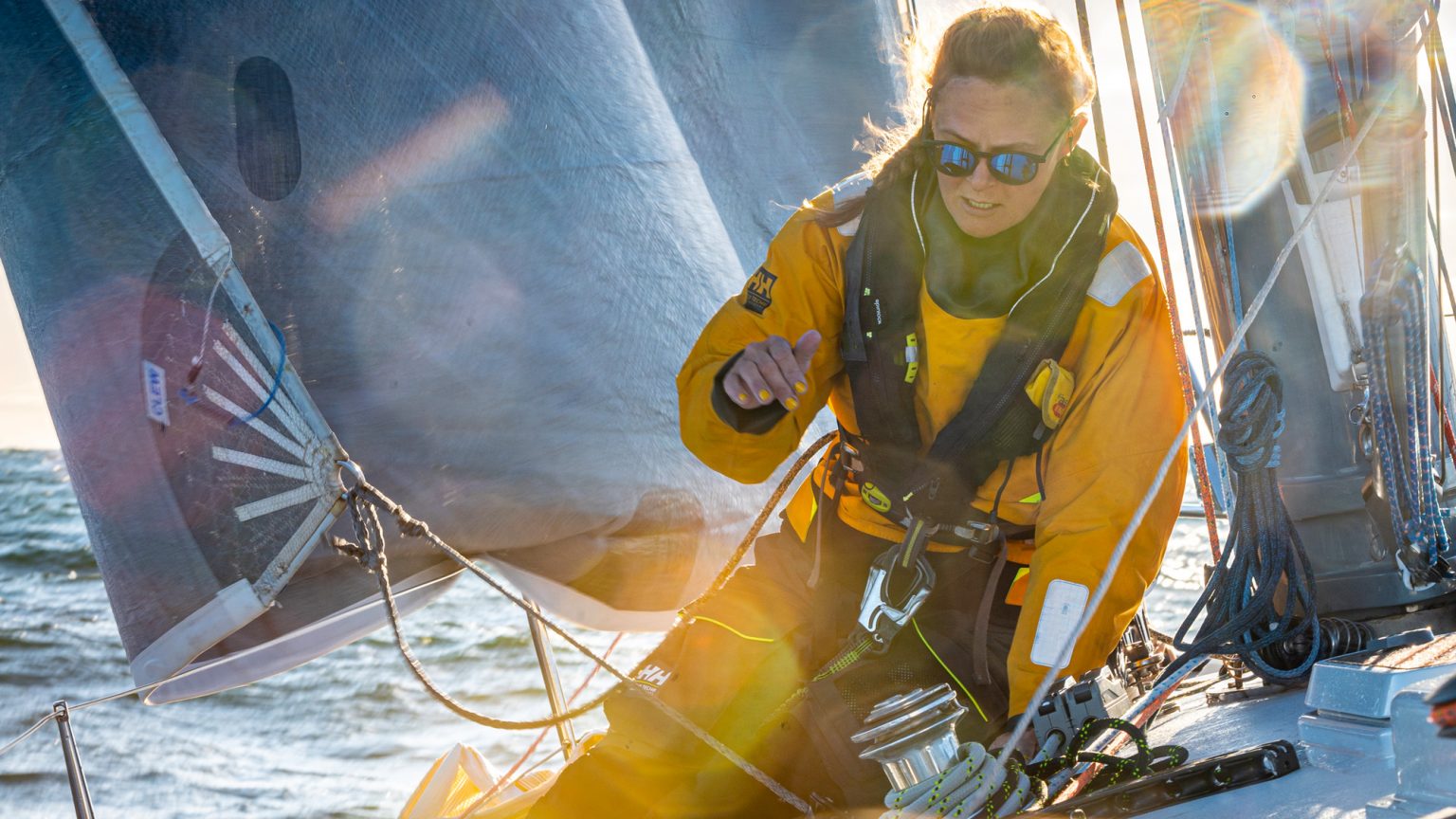Manoeuvring under power is about finding the edges of control – a lot can be learned without even leaving the harbour
I distinctly remember the first time I parked a yacht with an inboard engine, badly. It was in Cowes marina and I was 18 years old. One moment I was following my well thought out plan to the tee, the next we were hanging off a yacht’s guard rails by our anchor, perpendicular to the berth, closing off all through traffic.
Thirteen years on, I consider the experience a rite of passage which I feel relieved to have taken so young, before I had too much to lose.
Manoeuvring a sailing boat under power in confined spaces can raise even the most competent sailor’s heart rate. Walk the docks on a charter fleet’s changeover day, and the air will be so thick with stress and adrenaline, you too might start to feel your hands shake.
What is it that makes parking a boat so tense? The risk of damage is high. Entering a marina is like entering the dragon’s den of hard surfaces: you’re surrounded by expensive yachts, concrete walls, barnacle-encrusted pillars and wooden docks with sharp steel corners.
But it’s not just the yachts that can suffer scratches and scuffs; your pride is also at stake. Every marina has dock-watching hobbyists. Parking a boat can feel like a game in which the audience expects you to fail.
Article continues below…
‘Should we identify more with our youthful selves to drive motivation?’ – Nikki Henderson
As a team that is much younger than the rest of the competition, what superpower does that give you? That’s…
‘Why it’s tough being the only woman on board’ – Nikki Henderson
For Leg 3 of the Ocean Globe Race, L’Esprit d’équipe (FR) and Neptune (FR) were granted dispensation to sail with…
A hole in the boat, a wounded ego – these are real things to fear. But the main reason that parking a boat can cause so much anxiety is because it’s difficult!
Nailing it means moving as slowly as possible while still retaining control. It’s like walking a tightrope, and a test of your nerve. Can you hold pace just on the edge between losing steerage and going too fast (the faster the boat = the bigger the hole)? Can you feel the boat’s drift, momentum, and time your stop against the dock perfectly, reaching the point of no return just as you sink into your fenders?
Compare it to cycling – for most cyclists, playing on the edge of control is familiar. When approaching a red light junction on a road bike, if you cycle too fast you’ll pass through the traffic lights before they go green; too slow, and you’ll fall over. Ideally you can cycle just slow enough to not have to unclip from the pedals.
This requires prior planning, changing gear in advance, slowing down early, and then picking up the pace at just… the… right… time.
‘Living on the edge’ is a phrase commonly associated with recklessness. But excellent sailors aren’t reckless. Brave, yes. They’re prepared to take risks. But there’s a fine art to staying on the right side of the line. One of patience, sensitivity, and self-restraint. And manoeuvring a boat in a crowded marina is a good place to hone this skill.

Just as you might need to tolerate a temporary lull in the wind and keep the reef in, driving slowly in a crowded marina is a test of patience. The boat is more responsive if you go faster. The crew are anxious to get to the bar before last orders.
You might seem more confident zipping around the marina like you’re driving a car. But sailing is a game of risk management. And what’s riskier? Crashing into a pylon at top speed? Or drifting to a premature stop in slightly the wrong place?
A good sailor ‘feels’ a boat. Just as skis or a bicycle can become extensions of your body, the best skippers have an intrinsic connection with their boat. A sensitivity to heel, the subtle changes of speed, the drift, weight and power distribution, and the drag help you predict what the boat is about to do before it does it. Hone this depth of connection and you’ll find yourself intuitively knowing when to pull back the throttle and glide, and when to up the rpm just enough to keep water flowing over the rudder(s).
And finally, self-restraint. Sometimes pushing hard works out. But success or failure at sea is rarely decided by who went the fastest ‘that one time’. Consistency wins at sea. And consistency is about balance.
Sometimes you need to push, but sometimes you need to hold back.
Practise this in a marina. Find yourself accelerating towards a hard surface, or getting your left and right mixed up, or perhaps going too slow and losing control. The skill is to react with restraint, pushing just enough on the throttle – if at all – to minimise damage. Keeping the urge to slam on the brakes in check. And working out not how to get it perfect, but how to do just enough to stay on the right side of the line, every time.
 If you enjoyed this….
If you enjoyed this….
Yachting World is the world’s leading magazine for bluewater cruisers and offshore sailors. Every month we have inspirational adventures and practical features to help you realise your sailing dreams.Build your knowledge with a subscription delivered to your door. See our latest offers and save at least 30% off the cover price.






